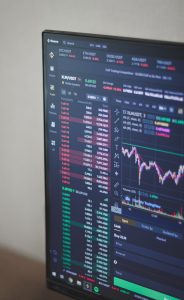When it comes to trading forex, one of the most important decisions you’ll make is whether to use a demo or live trading account. Both types of accounts have their benefits, but they also have some key differences that you should be aware of before you start trading.
Demo forex accounts are essentially practice accounts that allow you to trade with virtual money. The purpose of these accounts is to give you the opportunity to test out various trading strategies, get a feel for the forex market, and gain experience without risking any of your own money. Demo accounts are typically offered by forex brokers, and they are free to use.
Live forex accounts, on the other hand, are real trading accounts that you use to trade with real money. When you open a live account, you’ll need to deposit funds into it in order to start trading. The amount of money you need to deposit will depend on the broker you choose and the type of account you open.
So, how are demo forex accounts different from live forex accounts? Here are a few key differences to keep in mind:
1. Risk
The biggest difference between demo and live forex accounts is the level of risk involved. When you’re trading with a demo account, you’re not using real money, so you don’t have to worry about losing any of your own funds. This can be a great way to test out different trading strategies without the fear of losing money.
However, when you’re trading with a live account, you’re using real money, which means there is always a risk of losing money. This can be stressful for some traders, especially those who are new to forex trading.
2. Execution
Another important difference between demo and live forex accounts is the way trades are executed. With a demo account, trades are executed instantly, since there is no real money involved. This can give you a false sense of security, since you won’t experience the same delays or slippage that you might encounter when trading with a live account.
With a live account, trades may take longer to execute, since they need to be processed by the broker and the market. This can lead to slippage, where your trade is executed at a different price than you intended. Slippage can be a problem for traders who are using high-frequency trading strategies.
3. Emotions
One of the biggest challenges of forex trading is managing your emotions. When you’re trading with a demo account, you don’t have to worry about the emotional rollercoaster that comes with trading real money. You can make trades without fear or greed clouding your judgement.
With a live account, on the other hand, emotions can play a big role in your trading decisions. Fear of losing money, greed for more profits, and other emotions can all impact your trading decisions. Learning to manage your emotions is a key part of becoming a successful forex trader.
4. Spreads
The spreads offered on demo and live accounts may also differ. Spreads are the difference between the bid and ask price of a currency pair, and they represent the cost of trading. With a demo account, brokers may offer tighter spreads in order to attract more traders. However, with a live account, spreads may be wider, since brokers need to make money in order to cover their costs.
In conclusion, demo forex accounts and live forex accounts have their own unique advantages and disadvantages. Demo accounts are a great way to test out trading strategies and gain experience without risking any real money. However, live accounts offer a more realistic trading experience and allow you to make real profits (or losses). It’s important to understand the differences between these two types of accounts before you start trading, so you can choose the one that’s right for you.





